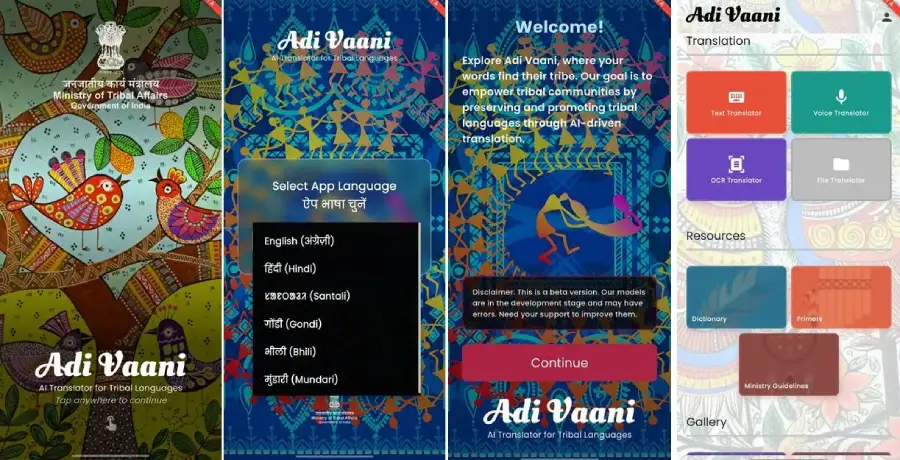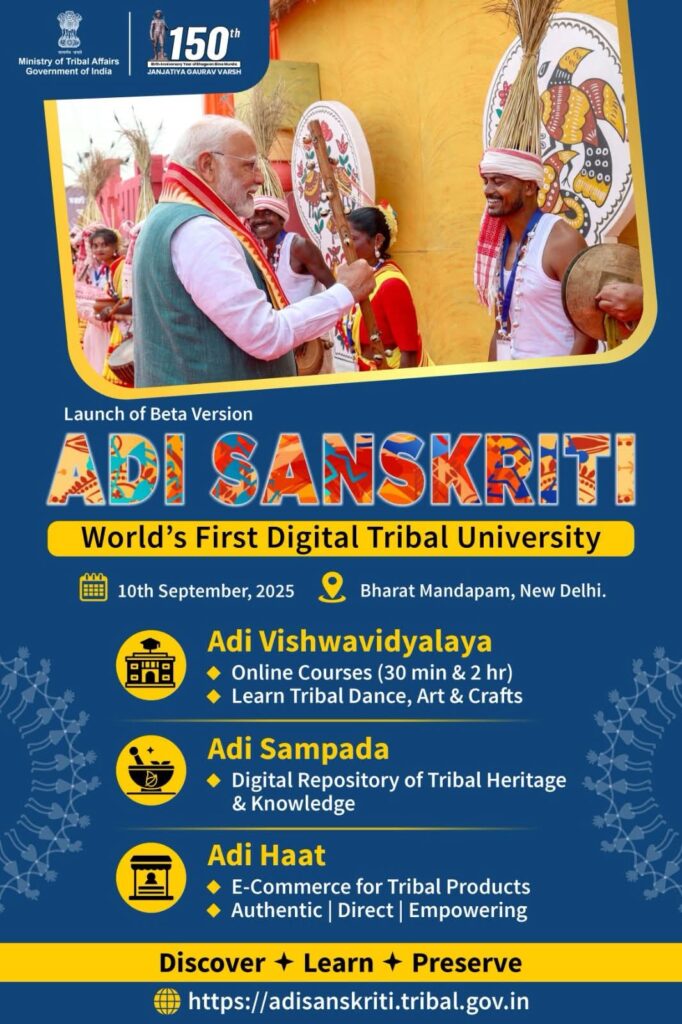In a landmark move to safeguard and celebrate India’s rich tribal heritage, the Union Ministry of Tribal Affairs launched the beta version of ‘Adi Sanskriti’, the country’s first-of-its-kind digital platform dedicated to tribal artforms, knowledge, and heritage. Officials describe it as the world’s first digital university for tribal communities, designed to blend tradition with technology.
A One-Stop Digital Hub for Tribal Heritage
The Adi Sanskriti platform is designed with three powerful components:
Adi Vishwavidyalaya (Digital Tribal Art Academy): An online learning space to document, teach, and share tribal artforms, rituals, and traditions.
Adi Sampada (Socio-Cultural Repository): A rich, continuously updated digital library archiving oral histories, music, dance, crafts, and other cultural expressions.
Adi Haat (Digital Marketplace): A dedicated online marketplace connecting tribal artisans directly with buyers across India and the world, cutting out middlemen and ensuring better prices.

Empowering Tribal Artisans Nationwide
Officials said the platform aims to empower tribal communities economically while simultaneously preserving their heritage. The online marketplace will boost visibility and sales of tribal products, creating a sustainable livelihood model.
By digitising tribal knowledge and artforms, the Ministry seeks to ensure that tribal culture thrives in the digital age and is easily accessible to students, researchers, and enthusiasts globally.
A Blend of Tradition and Technology
Union Tribal Affairs Ministry officials highlighted that Adi Sanskriti is more than a platform — it’s a cultural movement. By creating a repository of tribal wisdom and skills, the initiative is expected to strengthen cultural pride and encourage younger generations to participate in preserving their heritage.
India Sets a Global Example
With its mix of e-learning, archiving, and e-commerce, Adi Sanskriti represents a pioneering model for cultural preservation and promotion. It could inspire other countries with indigenous populations to adopt similar digital initiatives.


